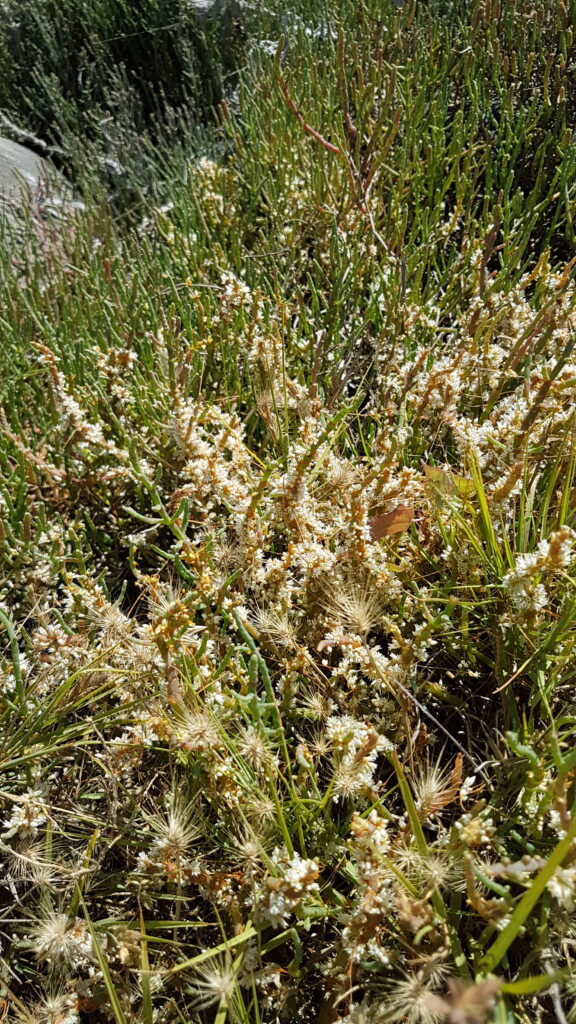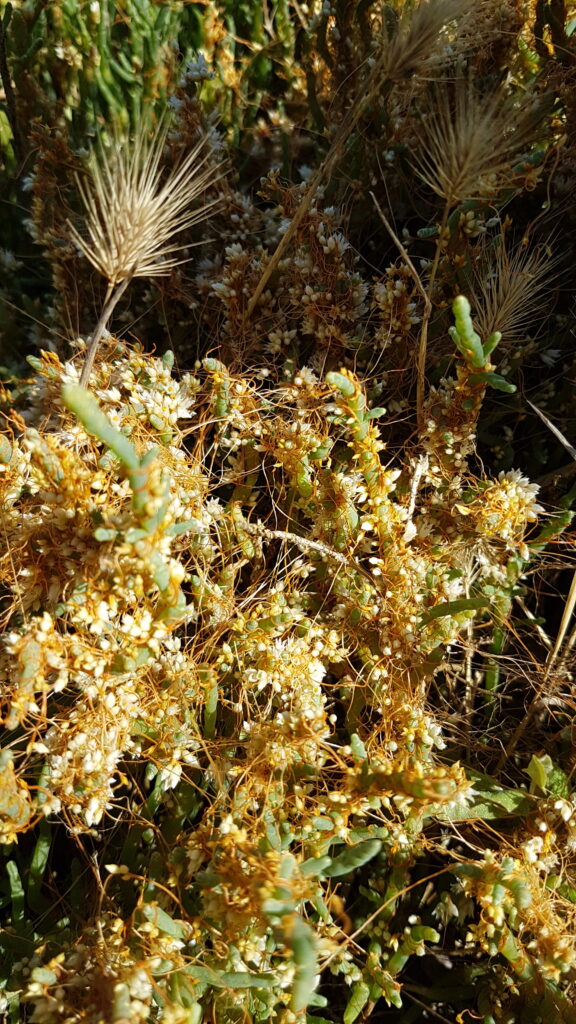
Salt Marsh Dodder (Cuscuta salina)

Salt marsh dodder is a parasitic plant which is native to western North America. It is commonly found in estuaries and salt marshes. It has thin orange stems and small, scaly orange leaves. In the summer, it produces white, bell-shaped flowers.

Salt marsh dodder has specialized structures called haustoria, which are root-like structures that penetrate the stem of the host plant and absorb nutrients. Since dodder can’t photosynthesize, all of its nutrients are obtained from its host plant. Dodder will continue to grow until the host plant can no longer support both itself and the dodder. This kills the host plant, and the dodder will also die unless it is connected to another host plant.

Although dodder is harmful to its host plant, it can have benefits for the ecosystem as a whole. In Esquimalt Gorge Park, dodder is often found as a parasite on sea asparagus (Salicornia virginica), which is a dominant species in the salt marsh area. By limiting the growth of sea asparagus, salt marsh dodder helps to create space for other plant species to become established. This increases the plant diversity of the community, and can improve the health of the ecosystem.
For more information, visit E-Flora BC or the Aquarium of the Pacific website.


